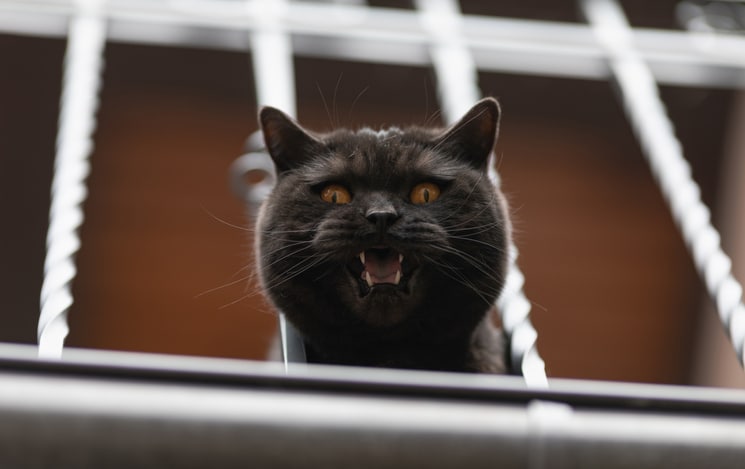Whether you’re a seasoned cat owner or just jumping into pet ownership, you may not know whether to spay your cat or what it even means. Read on to find out the basics of this common procedure.
What is spaying?
Spaying a cat means surgically removing the reproductive organs (uterus and ovaries) from a queen cat — an intact, unspayed female cat — via an incision in the abdomen. The medical term for this procedure is a complete ovariohysterectomy. You may see it abbreviated as OVH when looking at your cat’s medical records. The term “spaying” is applied to female animals only, but occasionally the term “neutering” is used to describe the sterilization of either a male or female cat.
“Traditionally, the age to spay a cat has always been at six months, before the first heat cycle,” says Dr. Brian Voynick, veterinarian and owner of the American Animal Hospital in Randolph, New Jersey. A heat cycle is when an unspayed female cat is sexually receptive to male cats and can become pregnant.
What are the benefits of spaying?
There are many benefits to spaying your cat. “Namely, it’s the only way to prevent pregnancy and potentially unwanted kittens,” says Dr. Taylor Truitt, a veterinarian at The Vet Set in New York, New York.
Truitt and Voynick offer up this list of further benefits from spaying your cat:
1. Decreases tumor risk
There’s less risk for malignant mammary tumors (breast cancer) later in life if a cat is spayed before her first heat.
2. Keeps infections at bay
It decreases the chance for infections of the uterus and cancers of the reproductive organs.
3. Eliminates unwanted behavior
The procedure eliminates undesirable aspects of being in heat including loud howling, increased and intense affection, intense rubbing on objects and marking territory with urine.
4. Reduces some risky behavior
There’s less desire for indoor cats to escape from the house, which is what they want to do to breed with male cats. There’s less roaming of territories, meaning a reduced risk of being hit by cars or attacked by other animals.
5. Improves life expectancy
Spayed cats tend to live longer than their unspayed counterparts as birth can be a taxing process on the animal and, as discussed, they’re at less risk for infections and cancers.
Can spayed cats go into heat?
Female cats that have been spayed can’t go into heat. They don’t have a uterus or ovaries anymore and are not able to reproduce.
What is the cost of spaying?
Truitt shares that the cost of spaying a cat can vary widely due to the owner’s personal circumstances and where the cat is spayed. “As a public outreach program to help stop the unwanted pet population, the ASPCA [American Society for the Prevention of Cruelty to Animals] will offer spays for as little as $5 if the owner is on public assistance.
In the regular ASPCA hospital in New York, the cost is roughly $125,” she says. In high-end “boutique” practices the cost can go up to $500 due to top-of-the-line equipment and testing.
Cost can also depend on how much pre- and post-operative pain management is prescribed and what kind of monitoring of anesthetics, blood pressure, pulse oximetry (measurement of oxygen in blood) and heart-activity monitoring is done during surgery.
Voynick says, “The cost varies greatly, and depends on if the cat has preoperative blood tests. This is a baseline level to see if the cat has normal electrolytes, liver and kidney function and tests negative for feline leukemia (FeLV) and feline immunodeficiency virus (FIV).” Voynick stresses the importance of these tests.
“These blood tests will serve them well the rest of their lives,” he says. He strongly advises that pets are prescreened before spay surgery so there are no surprises when it comes to the recovery process.
It is advisable to take some time off or have a pet sitter come look after your recovering cat, as spaying is a fairly invasive procedure with a longer recovery period than neutering.





